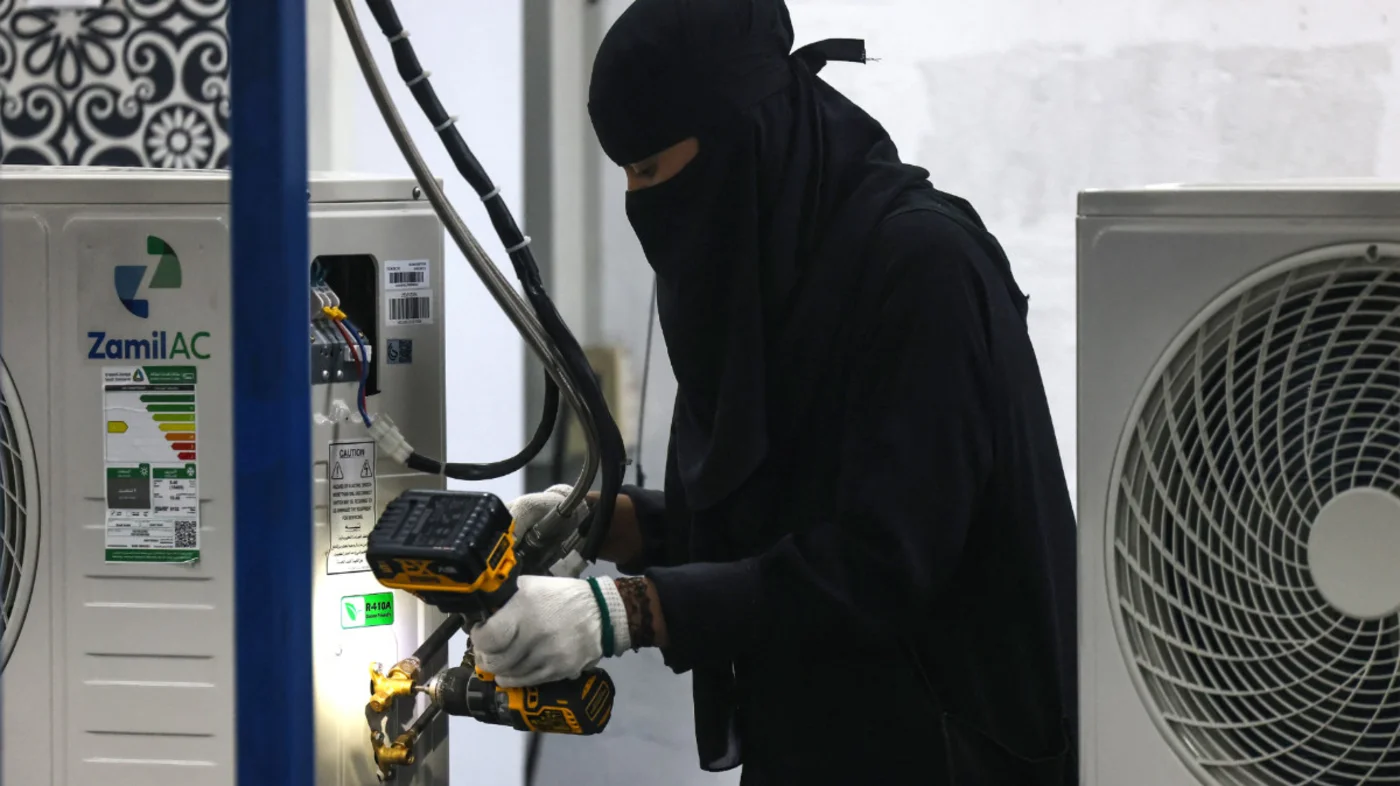
Trump fares can give the kingdom the impulse it needs, overthrowing energy prices and making Chinese exports less competitive.
With the US and China entering a boundless trade war, the best place to escape cross fire if you are a manufacturer can be Saudi Arabia.
Saudi Arabia and other state -rich Gulf states can benefit as they become new safe ports for manufacturers seeking to reduce tariff risks, experts say.
“As tariffs increase in certain countries, we are likely to see a growing change of business to the GCC [Conselho de Cooperação do Golfo]Whether through Nearshoring or Friendshoring, ”Adel Hamaizia, a Gulf expert at Harvard Belfer Center Middle East Initiative, to Middle East Eye.
At first glance, it now looks like a bad time to be a Gulf monarch sitting in oil fields.
Petroleum prices, on which Gulf countries depend to finance everything, from investments in artificial intelligence to megaprojects, are suffering a strong drop. Brent oil fell 16% since US President Donald Trump revealed his “Liberation Day rates” in early April.
Gulf states have complied with this announcement at the lowest possible rate of 10% – which reflects the fact that the Gulf buys much more from the US, independent energy countries, than it exports to Americans.
Oil prices recovered a little on Wednesday after Trump announced a 90-day rate break. However, they fell again on Thursday, with Brent being negotiated down 3.67%.
Trump’s break does not apply to China, which received an effective 145% fare in response to US products on US products.
The fall in oil reflects the fact that the two largest economies in the world and their main geopolitical rivals are in unknown waters, while Trump advances with plans to subvert the global trade system.
‘Do in Saudi Arabia’
This is where the opening to Saudi Arabia resides, said Ellen Wald, founder of the Transverse Energy Consulting Company and Author of Saudi Inc, to Mee.
“Saudi Arabia should send its trade representatives to the Trump administration right now, asking, ‘What was China providing you with? Tell us what we will do and we will do in Saudi Arabia and offer a great trade agreement,” Wald said.
Manufacturing is an essential component of the heir prince of Saudi Arabia, Mohammed Bin Salman, to reduce the dependence on his kingdom of oil recipe.
Saudi economy minister Faisal Alibrahim told Bloomberg in late 2024 that the kingdom was working to increase non -oil exports so that long -term kingdom economy did not depend only on oil.
In March, Saudi Arabia said non -oil exports – without including re -exports – increased by 13% over the previous year.
The kingdom has inaugurated new flashy factories, attracting companies such as Lucid’s electric vehicle manufacturer with promises to buy assembly line products. But in addition to the media hype, Saudi Arabia has faced difficulties. Oil still represents 87% of Saudi exports.
Trump’s tariff war can give the kingdom the necessary impulse, simultaneously overthrowing energy prices and making non -competitive Chinese exports in the US.
Cheap energy, little regulation and a lot of land
Analysts claim that Trump’s efforts to reactivate American industry through tariffs will face difficulties as factories demand a lot of capital and it takes years. The same applies to Saudi Arabia, but has several advantages.
Saudi Arabia and United Arab Emirates have invested in AI and robotics, which could help deal with labor shortages. But the advantages of the Gulf in a more uncertain and nationalist commercial world are more evident. Unlike Europe, Saudi Arabia and other Gulf countries have cheap energy, a lot of open space and little regulation.
A clear example is aluminum. The Gulf Region already accounts for 16% of US aluminum imports. Bahrain and Oman have been major aluminum suppliers for the US, and the United Arab Emirates have been driving exports there in recent years.
Of course, metal emphasizes the challenges of navigating the world of Trump’s tariffs.
His 90 -day break was not universal. The government still imposes 25% tariffs on steel and aluminum. However, with China charged almost six times this value, experts say, the Gulf remains relatively competitive.
What can Saudi Arabia do?
The most obvious industry for Saudi Arabia explore is petrochemical. Petroleum refined polymers and compounds are found in everything from fertilizers and plastics to detergents to clothing, paper and clothing.
Saudi Arabia has been trying to expand its Downstream production for years, and petrochemistry has been one of the main priorities. Trump rates and energy prices will accelerate this trend.
Hamaizia said low energy costs make the gulf more competitive for “targeted manufacturing.”
Experts say Saudi Arabia will be more competitive by exporting petrochemical products, fertilizers, specific steel products and even medium -sized appliances.
Of course, while the US and China face each other in a trade war, the gulf may also end up being harmed.
China’s exports to Gulf have been growing for years. Experts say Chinese manufacturers, excluded from the US market, are about to discharge more of their cheapest products in the Middle East as US consumption is reduced by tariffs.
“China is likely to divert its commercial flows and put products with cheaper prices in the gulf,” Justin Alexander, director of Khalij Economics and analyst of the GlobalSource Partners, to Mee.
However, Alexander sees the change in the world order making Saudi Arabia and other more attractive Gulf countries for manufacturers in general.
“Gulf states are economies open by nature. They embrace free trade,” he said.
If we are walking into a world of tariff uncertainty and economic nationalism, this could increase the overall gulf competitiveness. If you invest in a state of the Gulf, you may have relative confidence that you will not pay tall rates about your imports or face high rates about your exports – this includes American manufacturers.
A cloudy vision for 2030?
Alexander states that any long -term impulse in the industry will hardly compensate for the negative shock of the fall in oil prices. The state -owned company of Saudi Arabia, Aramco, had already cut dividends in March. The sovereign background of the kingdom, the PIF, uses dividends to finance megaprojects.
The kingdom is already reducing megaprojects like Neom. Instead of 1.5 million people living in the city by 2030, Saudi authorities now predict less than 300,000 inhabitants.
The International Monetary Fund states that Saudi Arabia needs oil at $ 90 a barrel to balance its budget. On Thursday, Goldman Sachs drew a dark panorama for Saudi Arabia projects, projecting “quite significant” budget deficits and more cuts in megaprojects.
But if oil prices remain in the $ 60 range and China remains charged, the impact could be resizing and redirecting Saudi Arabia’s economic transformation plan. In short, exporting petrochemicals and bland plastics can overcome the intelligent cities of the desert.
“The drop in oil prices is not big, but the Saudi budget will get what wants to the aramco, it costs what it costs. The general panorama is that there are many opportunities for Saudi Arabia,” said Wald, author of Saudi Inc.
Originally published by Middle East Eye on 10/04/2025
Por Sean Mathews
Source: https://www.ocafezinho.com/2025/04/10/o-lado-positivo-da-arabia-saudita-na-guerra-comercial-entre-eua-e-china/

